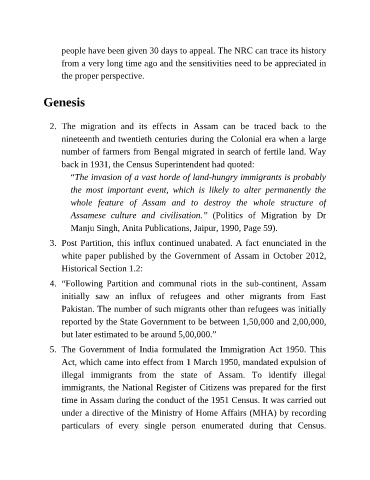Page 576 - SSB Interview: The Complete Guide, Second Edition
P. 576
people have been given 30 days to appeal. The NRC can trace its history
from a very long time ago and the sensitivities need to be appreciated in
the proper perspective.
Genesis
2. The migration and its effects in Assam can be traced back to the
nineteenth and twentieth centuries during the Colonial era when a large
number of farmers from Bengal migrated in search of fertile land. Way
back in 1931, the Census Superintendent had quoted:
“The invasion of a vast horde of land-hungry immigrants is probably
the most important event, which is likely to alter permanently the
whole feature of Assam and to destroy the whole structure of
Assamese culture and civilisation.” (Politics of Migration by Dr
Manju Singh, Anita Publications, Jaipur, 1990, Page 59).
3. Post Partition, this influx continued unabated. A fact enunciated in the
white paper published by the Government of Assam in October 2012,
Historical Section 1.2:
4. “Following Partition and communal riots in the sub-continent, Assam
initially saw an influx of refugees and other migrants from East
Pakistan. The number of such migrants other than refugees was initially
reported by the State Government to be between 1,50,000 and 2,00,000,
but later estimated to be around 5,00,000.”
5. The Government of India formulated the Immigration Act 1950. This
Act, which came into effect from 1 March 1950, mandated expulsion of
illegal immigrants from the state of Assam. To identify illegal
immigrants, the National Register of Citizens was prepared for the first
time in Assam during the conduct of the 1951 Census. It was carried out
under a directive of the Ministry of Home Affairs (MHA) by recording
particulars of every single person enumerated during that Census.

